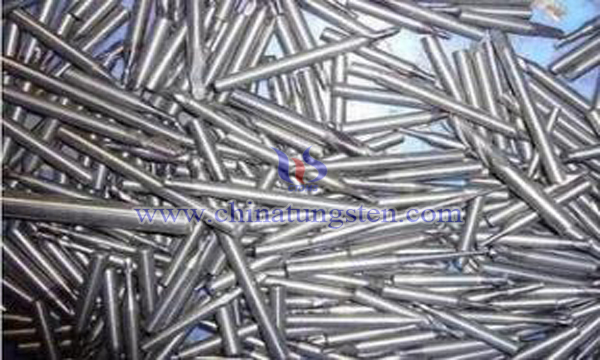Waste Tungsten-Cobalt Hard Recovery and Chromium Removal
- Details
- Category: Tungsten Information
- Published on Friday, 31 May 2019 10:25
Ultrafine grained tungsten-cobalt cemented carbide has high hardness and high strength, which is widely used in many fields such as woodworking tools, dental tools, metal processing and wear-resistant materials. The properties of ultrafine cemented carbides are closely related to grain size.
With the decrease of WC grain size, the strength and hardness of the alloy will be greatly improved. Therefore, restraining the growth of tungsten carbide grain in sintering process is the key technology to produce superfine cemented carbide. Previous studies have shown that transition metal carbide chromium carbide can effectively inhibit WC grain growth during sintering process.

In order to solve the above technical problems, researchers used the principle of co-precipitation, through adding basic magnesium carbonate to make the mother liquor of chromium-containing crystals alkaline, regenerated small particles of chromium hydroxide flocculation precipitation, thus achieving the separation effect of tungsten and chromium. Its technical scheme includes the following steps:
A.Preparation of 50% basic magnesium carbonate suspension;
B.Take a certain volume of crystalline mother liquor containing chromium concentration of 0-10.0 g/L and put it into beaker. Add the solution of step a to adjust the pH of crystalline mother liquor to 8.5-11.0.
C.The solution in step B beaker is poured into a conical bottle and sealed. It is heated in a water bath pot of a thermostat and stirred. The stirring speed is 100-400 rad/min. The reaction time is 0.5-3.0 h when the temperature is raised to 60-100 ℃.
D.After the reaction, the solution obtained in step ℃ was filtered and the chromium content in the filtrate was detected to be less than 1.5 mg L-1. The filtrate was returned to the existing tungsten smelting process for effective recovery of tungsten.
Magnesium carbonate is a new reagent for deep chromium removal. It not only does not introduce other impurities, but also reduces the chromium content in mother liquor containing chromium to less than 1.5 mg L-1. Except for 99% chromium, it is superior to other reagents except chromium such as sodium hydroxide, ammonia water and magnesium chloride to achieve the purpose of deep separation of tungsten and chromium.
- Tungsten Manufacturer & Supplier, Chinatungsten Online: www.chinatungsten.com
- Tungsten News & Prices of China Tungsten Industry Association: www.ctia.com.cn
- Molybdenum News & Price: news.molybdenum.com.cn
- Tel.: 86 592 5129696; Fax: 86 592 5129797; Email: sales@chinatungsten.com



 sales@chinatungsten.com
sales@chinatungsten.com